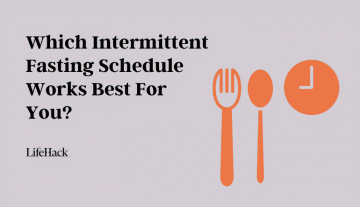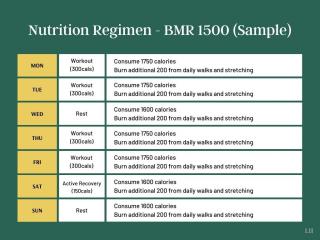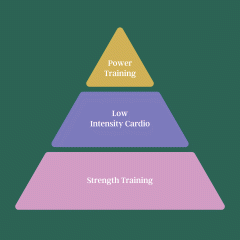We often hear people talk about the importance of living in the present and the different ways it will benefit us. It all sounds wonderful, especially the lower levels of stress and anxiety, but how exactly can we live in the moment when our mind is constantly worrying about the past or plans for the future?
In this article, we’ll discuss some of the benefits of living in the moment you may not be aware of. Then, we’ll look at some of the obstacles and why we worry. Finally, and most importantly, I’ll show you how to live in the moment and stop worrying using some simple practices that you can easily incorporate into your busy schedule.
The result: a happier and more fulfilling life.
The Importance of Living in the Moment
“The secret of health for both mind and body is not to mourn for the past, worry about the future, or anticipate troubles, but to live in the present moment wisely and earnestly.” -Buddha
While it can be difficult to live in the moment, it has innumerable benefits.
Here are just a few that will enhance your life tremendously:
Better Health
By reducing stress and anxiety, you avoid many of the associated health consequences, such as high blood pressure, heart disease, and obesity. Studies have shown that being present can also improve psychological well-being.
Improve Your Relationships
Have you ever been with someone who is physically present, but mentally s/he’s a million miles away?
Being with unavailable people is a struggle, and building relationships with them extremely difficult.
How about being with someone who is fully present? We enjoy being with her/him because we can make a much deeper connection.
By living in the moment, you can be that person other people enjoy being with, and you make relationships much easier.
Greater Self-Control
You have greater control over your mind, body, and emotions. Imagine how much better your life would be if it weren’t at the mercy of a racing mind and unpredictable emotions. You would certainly be more at peace, and much happier.
Why Do We Worry?
Before we answer this question, it’s important to distinguish between worry and concern.
When we are concerned about something, we are more likely dealing with a real problem with realistic solutions. Then, once we do whatever we can to address the problem, we’re willing to live with the outcome.
Worrying, on the other hand, involves unrealistic thinking. We may worry about a problem that doesn’t really exist, or dwell on all the bad things that can happen as a result. Then, we feel unable to deal with the outcome. Either way, we have difficulty dealing with uncertainty, which is a normal part of life.
Certainly, some of our problems may not have desirable outcomes, such as a serious health issue. Some problems may be beyond our control, such as civil unrest or economic downturn. In such cases, it can be hard to avoid worrying, but not impossible.
3 Steps to Start to Live in the Moment
Step 1: Overcome Worrying
In order to overcome worrying, we need to do two things:
Calm Your Mind
When you calm your mind, you are able to see more clearly.
The reason some problems seem so daunting is that our mind is racing so fast that we cannot see things as they truly are. Then, we make up a bunch of possible scenarios in our mind, most of which are unlikely to come true.
In addition to seeing more clearly, a calm mind will help us think more realistically. Unrealistic thinking is fueled by confusion and uncontrolled emotions. Calming your mind will reduce confusion and calm your emotions, allowing you to live in the present.
Focus on Solutions Instead of Problems
Some people tend to be more solution-oriented, and others more problem-oriented. Some of the factors that may determine this are gender, upbringing, and education.
People with more education tend to be problem-solvers. That is what their years of education train them to do. In addition, their jobs probably reinforce this way of thinking.
If you’re not problem-solving oriented, don’t worry. You can train yourself to worry less. We’ll discuss that soon.
Step 2: Identify Obstacles to Living in the Moment
In today’s busy world, it can be a challenge to live in the moment. The reasons revolve around how our mind works, as well as outside influences.
Racing Mind
Many busy people have a racing mind that never seems to slow down. Their mind gets so agitated from too much sensory stimulation.
You see, anything that stimulates any of our five senses will trigger a thought, and that thought leads to another, and then another, and so on.
If you have a busy life, all your activities will overstimulate your mind and make it seemingly impossible to slow it down.
Unpleasant Situations and a Troublesome Past
None of us want to be in unpleasant situations, or remember those of the past. They can bring up painful emotions, which we don’t want to feel.
So how do most people cope with painful emotions?
By doing whatever we can to avoid them, we can take our mind to another place and time where things are more pleasant.
In other words, we avoid living in the present moment.
Some people resort to things that stimulate sensory pleasure, such as food, alcohol, or sex. Others will consume substances that dull their mind and keep them from thinking about unpleasant or stressful situations.
A Wandering Mind
From the moment we are born (likely sooner) until the time we die, our body and mind are active performing some function. Therefore, it’s natural for our mind to have some level of activity, whether conscious or unconscious.
Generally, a wandering mind is unproductive. One thought starts an endless chain of thoughts, and this process can go on until we need our mind to perform a specific function or get distracted with something else.
Now, there are times when a wandering mind can be productive, such as when creating works of art, or trying to find creative solutions to problems. In such cases, we need our mind to explore different possibilities.
Outside Influences
Most of us are not fully aware of how our environment and social norms influence our thinking and behavior. People and institutions are constantly competing for our attention. The media draws our attention to the past, and advertising usually to the future.
Many people around us who dwell on the past or future try to draw us to their way of thinking. Even the whole concept of the American dream is geared toward the future. It tells us that if we acquire things like a good career, family, and house, then we’ll be happy.
Step 3: Practice Mindfulness
So how can we live in the moment in a world that is constantly trying to draw our attention to the past and future?
Before we get into concrete actions you can take, it’s important to understand what mindfulness is. You’ve probably heard the term before, but may not fully understand what it means.
Understand Mindfulness
The concept of mindfulness is actually quite simple. To be mindful is to live in the moment.
When you are mindful, your attention is focused on what is happening in the present moment, and you are fully in touch with reality.
You are aware of what is happening in your body, mind, emotions, and the world around you. This is different than thinking about these things. To develop greater understanding, you don’t have to think about them so much, but rather just observe them.
This may be counterintuitive to many people, especially intellectuals, because they’re so used to using logic to develop greater understanding. With mindfulness, we calm our mind and emotions so we can see clearer. Then, much of our understanding will come from simple observation. When we develop mindfulness, we literally expand our awareness.
To develop mindfulness, we need to train ourselves to observe things more objectively, that is, without our emotions or preconceived ideas influencing our views.
If you’re ready to live a better life, read on for some simple mindfulness practices that you can incorporate into your daily routine to help you live in the moment.
You don’t have to do all of them, but rather choose the ones that appeal to you and suit your lifestyle.
Mindfulness Meditation
Mindfulness meditation is the mainstay of developing mindfulness and living in the moment. To practice mindfulness meditation, all you really have to do is sit quietly and follow your breathing. When your mind wanders off, just bring it back to your breath.
Notice how your lungs expand with each in-breath and contract with each out-breath. Let your breathing become relaxed and natural.
You don’t have to do it perfectly. The idea is to start spending time away from the constant sensory stimulation of all your activities, and just allow it to settle down naturally. Start with about 5 to 10 minutes per day and work your way up to about 20 minutes or longer.
This practice is highly effective, and can have both short-term and long-term benefits.
If you want to learn more about mindfulness meditation, take a look at this article: What Is Mindfulness Meditation? 7 Ways to Start Meditating
Mindful Breathing
While this may sound the same as mindfulness meditation, all you’re really doing is taking short breaks occasionally (10 to 15 seconds) to observe your breathing. Stop whatever you’re doing, and take a few mindful breaths, then resume your activity. That’s it.
You can do mindful breathing at any time of the day during your busy schedule. What it does is interrupt the acceleration of your mind. It is like taking your foot off the accelerator while driving. It’s a nice refreshing break you can take without anyone noticing.
Here’re some breathing exercises you can try to learn: 5 Breathing Exercises for Anxiety (Simple and Calm Anxiety Quickly)
Mindful Walking
Walking is an activity that you perform several times throughout the day. We often think we’re being productive by texting or calling someone while walking. But are we really?
Instead of getting on your cell phone or letting your mind wander off, why not use your walking to train yourself to live in the moment and focus on the task at hand?
Mindful walking is similar to mindful breathing, but instead of focusing on your breath, focus on your walking. Pay attention to each footstep. Also, notice the different motions of your arms, legs, and torso. When your mind wanders off, just bring your attention back to your walking.
You can even make a meditation out of walking. That is, go walking for a few minutes outside. Start by slowing down your pace. If you slow down your body, your mind will follow.
In addition to paying attention to your walking, notice the trees, sunshine, and critters. A mindful walk is enjoyable and can really help your mind settle down.
You can discover more benefits of walking in nature here.
Mindful Eating
Eating is an activity that most of us perform mindlessly. The reason is that it doesn’t require your attention to perform. Therefore, many of us try to multitask while we eat. We may talk on the phone, text, watch TV, or even hold a meeting.
The problem with not eating mindfully is that we don’t eat what our body and mind need to perform at an optimal level. We may eat unhealthy foods, or too much. This can lead to various health problems, especially as we get older.
Mindful eating has many health benefits, such as reduced food cravings, better digestion, and even weight loss.
So how do you eat mindfully? Start by slowing down, and avoid the temptation to distract yourself with another activity. Here are 3 different aspects of eating where you can practice mindfulness:
Eating itself: Focus your attention on choosing a portion of food to insert into your mouth. Notice the smell, flavor, and texture as you chew it; then finally swallow it. As with following your breath during meditation, pay close attention to every aspect of eating. Choice of foods: Although you’ve already chosen your food before you have begun eating, you can still take the opportunity to contemplate your choices. Think about the nutrients your body needs to sustain itself. Contemplating the sources: Most of us don’t think about all the work it takes to provide us with the food we eat. While you’re eating, consider all the work by the farmer, shipping company, and the grocery store. These are real people who worked hard to provide you with the food necessary for your survival.You can find more tips about mindful eating here: 7 Simple Steps to Mindful Eating
Mindful Activities
Choose an activity that you perform regularly, such as washing dishes. Focus all your attention on this activity, and resist the temptation to let your mind wander,. When it does, just bring your attention back to washing dishes.
Notice some of the specific movements or sensations of washing dishes, such as how the soapy water feels on your hands, the circular motion of scrubbing the dish, or the rinsing. You’d be surprised at how such a mundane activity can truly expand your awareness.
You can choose any activity you like, such as ironing, folding clothes, mowing the lawn, or showering. Over time, you will begin doing all these activities with greater mindfulness.
Final Thoughts
Practicing mindfulness is like regularly putting small amounts of change in a jar. They will all add up over time, and this will add up to greater peace and happiness, as well as get you closer to achieving your goals.
Remember, you don’t have to do the mindfulness practices perfectly to get the benefits. All you have to do is keep bringing your mind back to the present moment when it wanders off.
Practicing mindfulness may be a bit challenging in the beginning, but I can assure you it will get easier.
The benefits of living in the moment are well within your reach, no matter how much your mind is racing. If you stick with these mindfulness practices, you too will learn how to live in the moment and stop worrying. When you do, a whole new world will open up for you. This is what Zen master Thich Nhat Hanh calls the ultimate reality.
More About Living in the Present
Featured photo credit: Smile Su via unsplash.com





























































